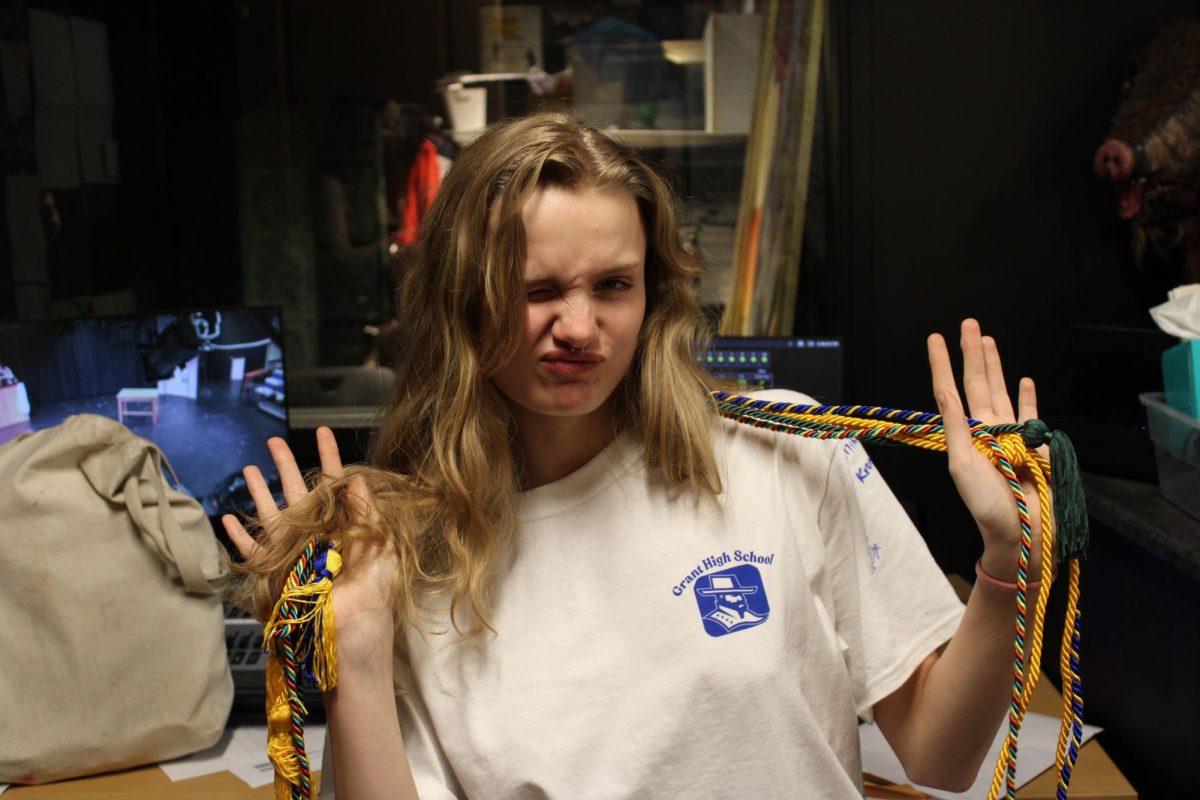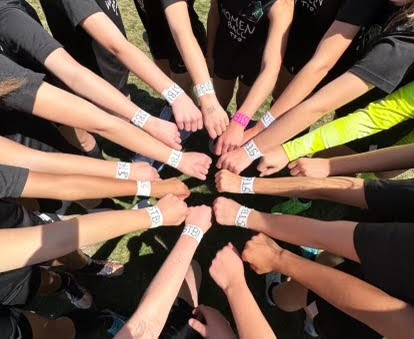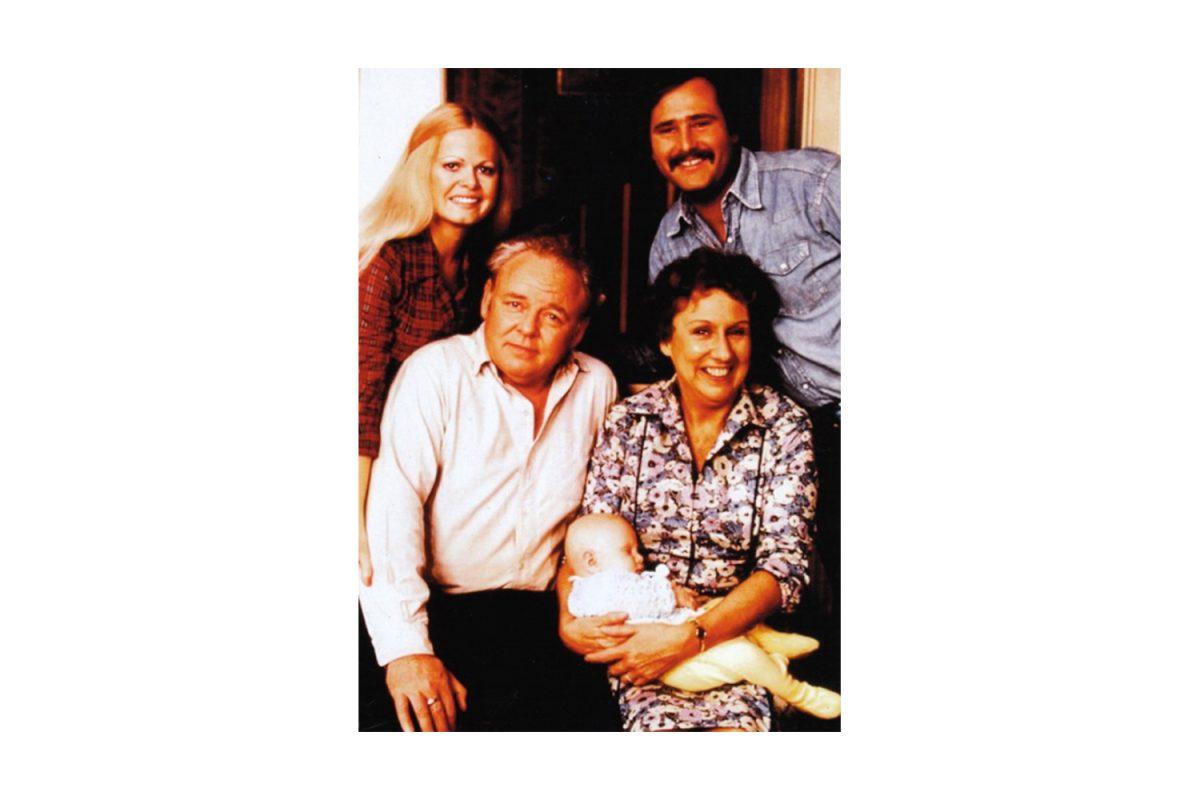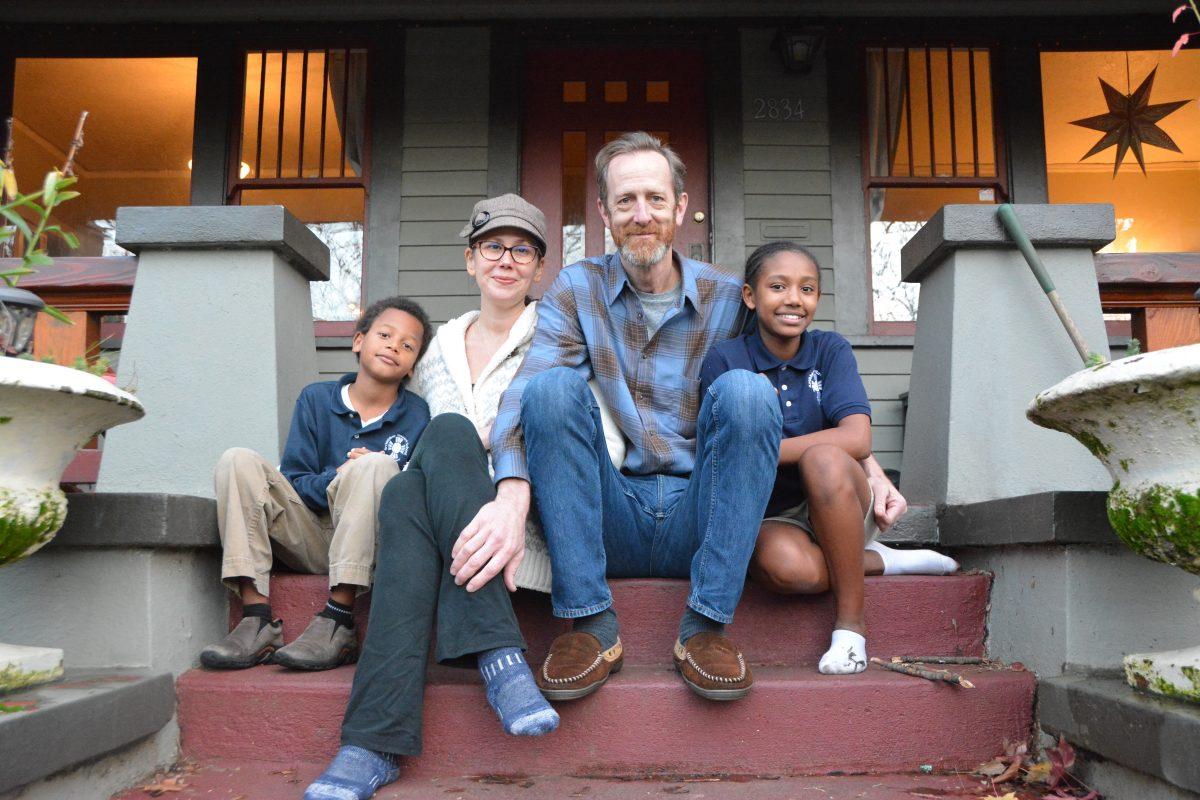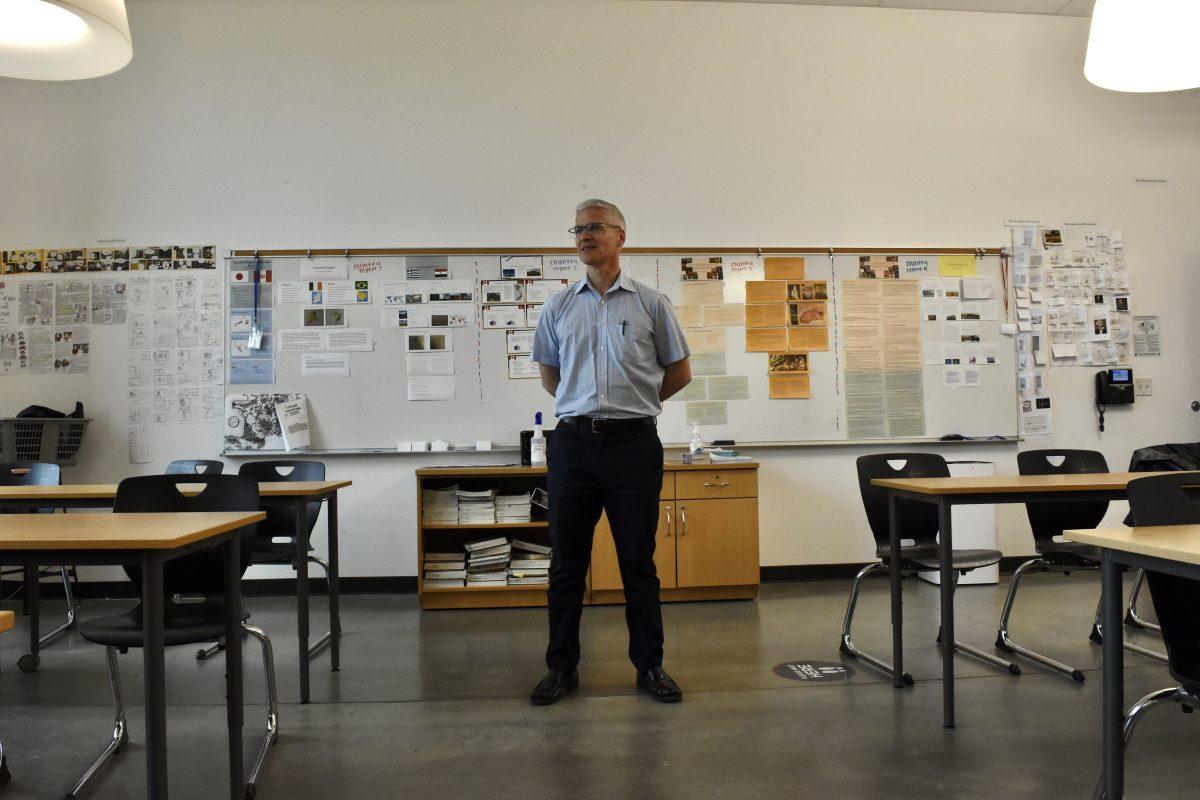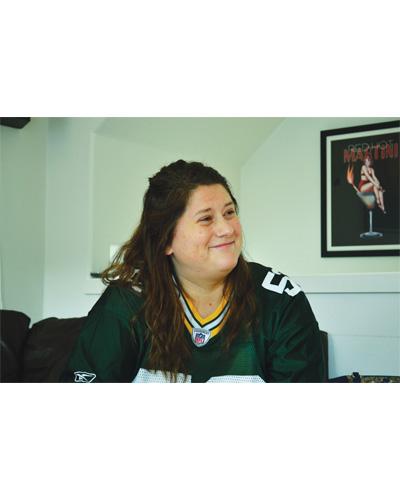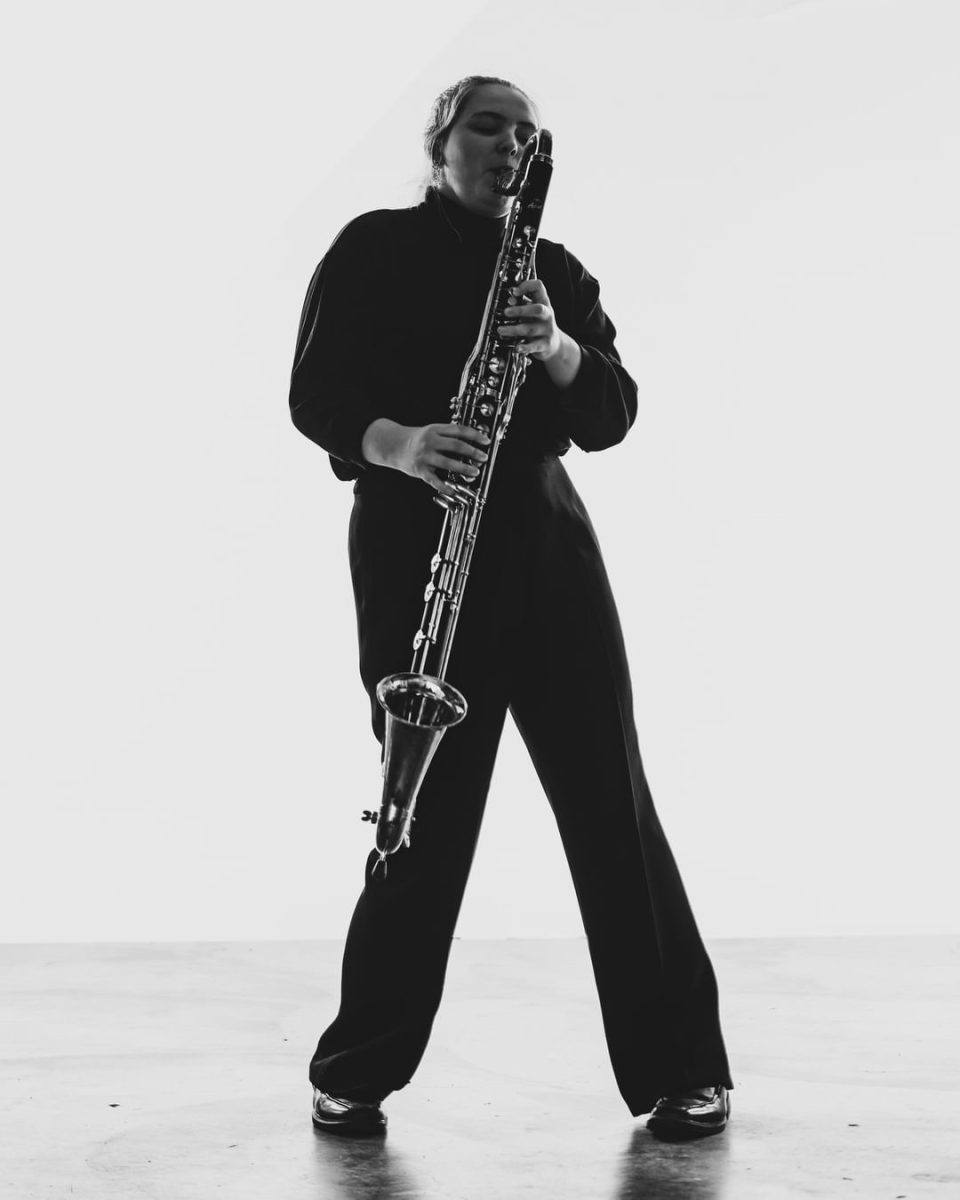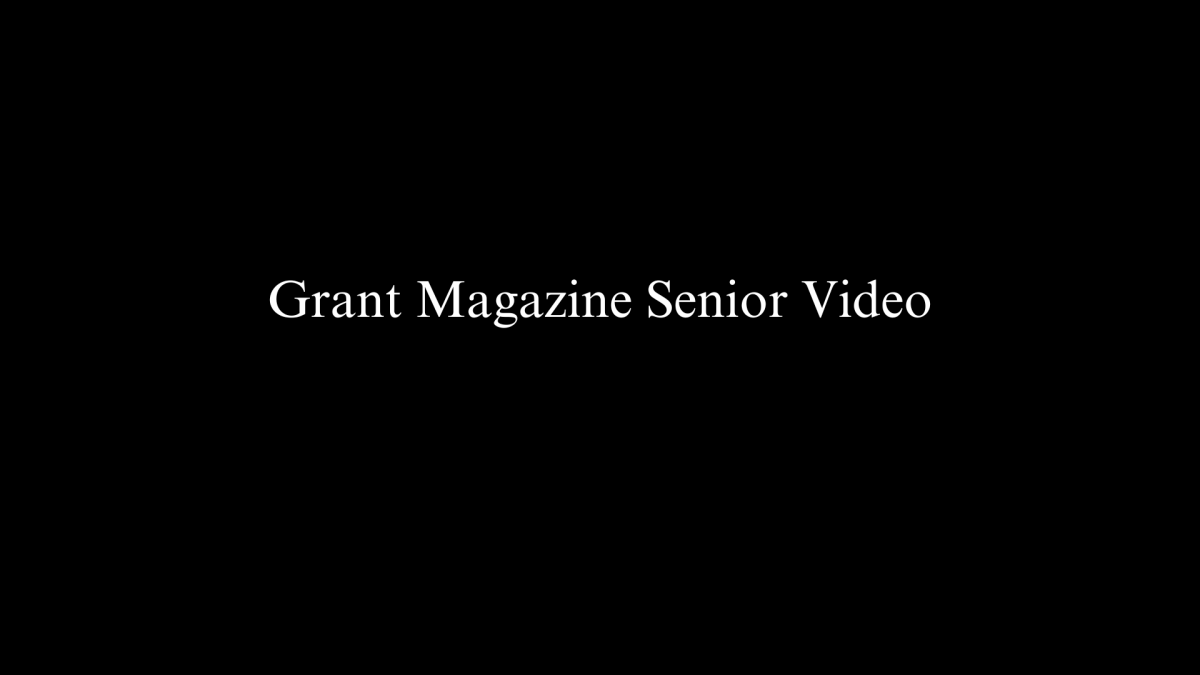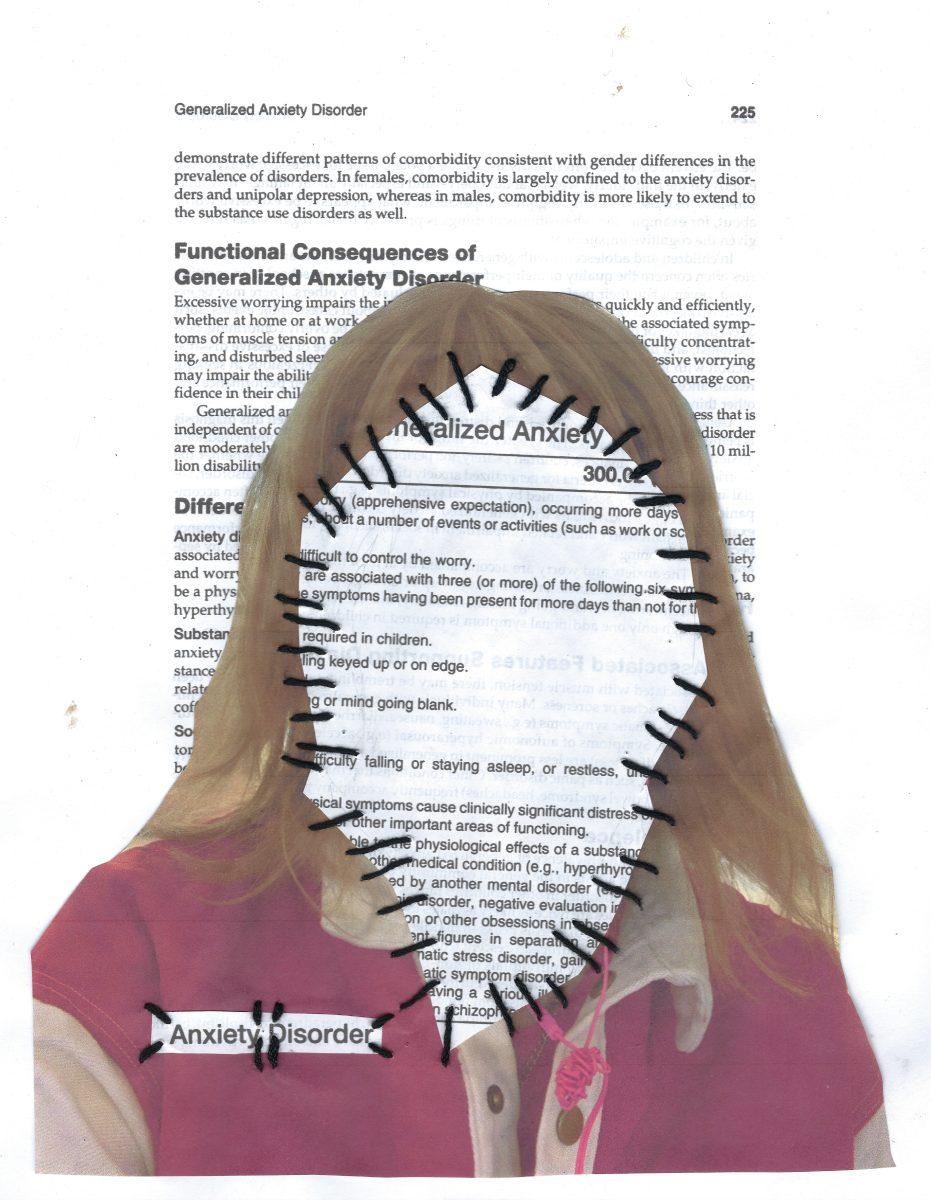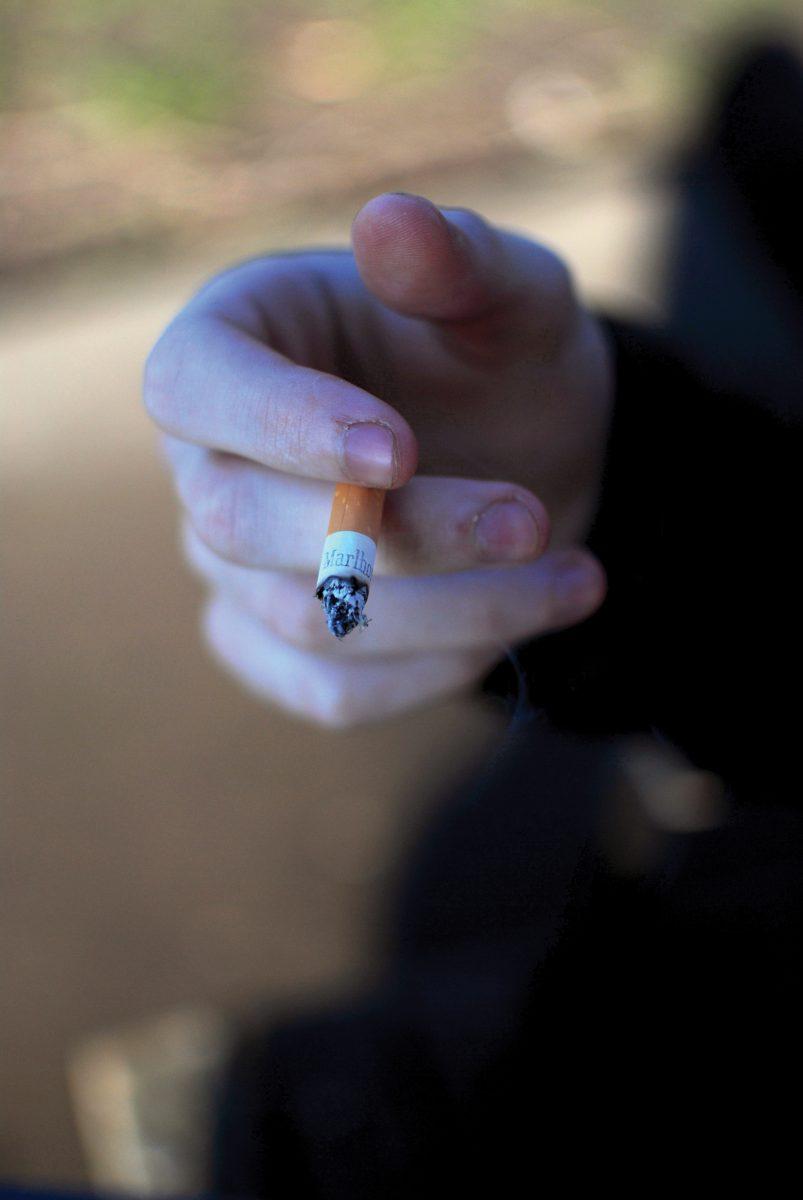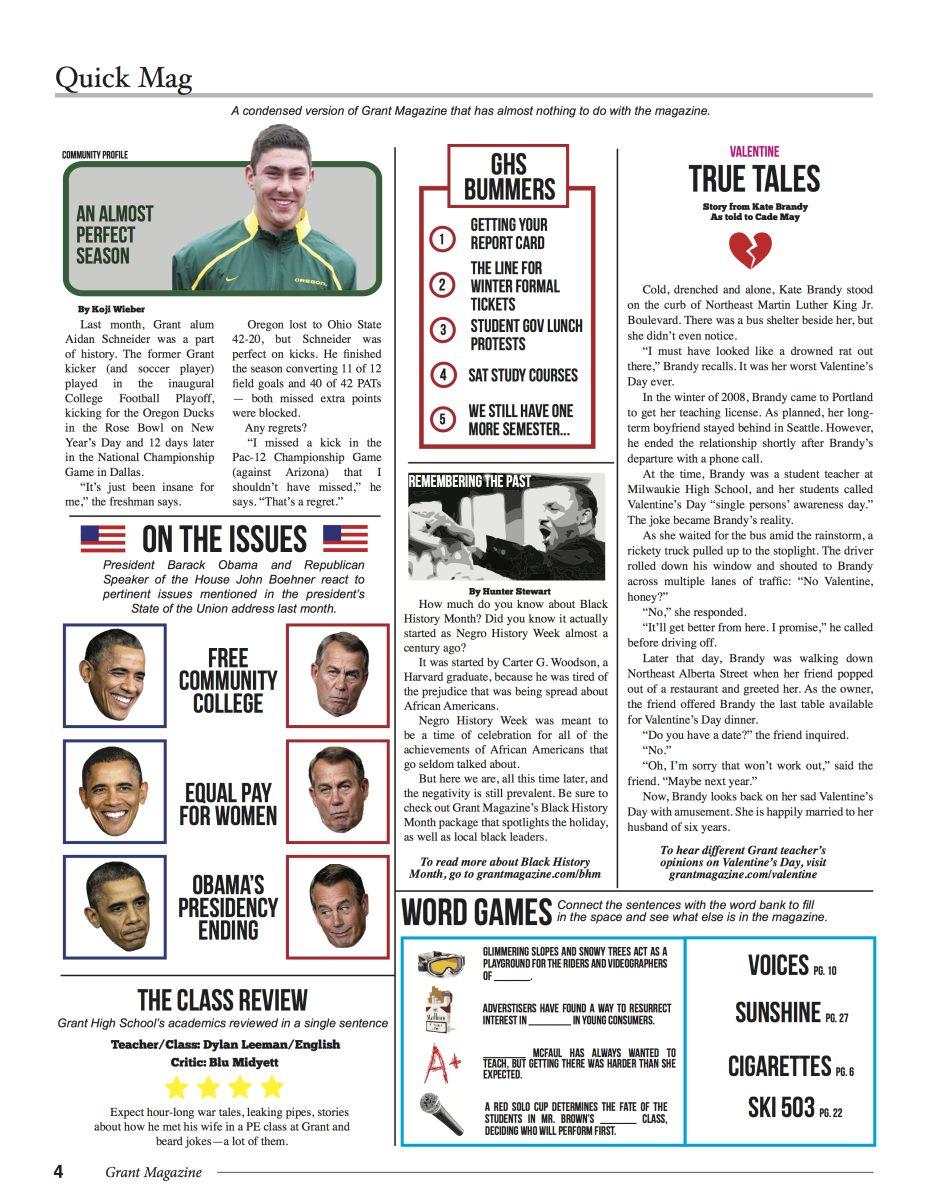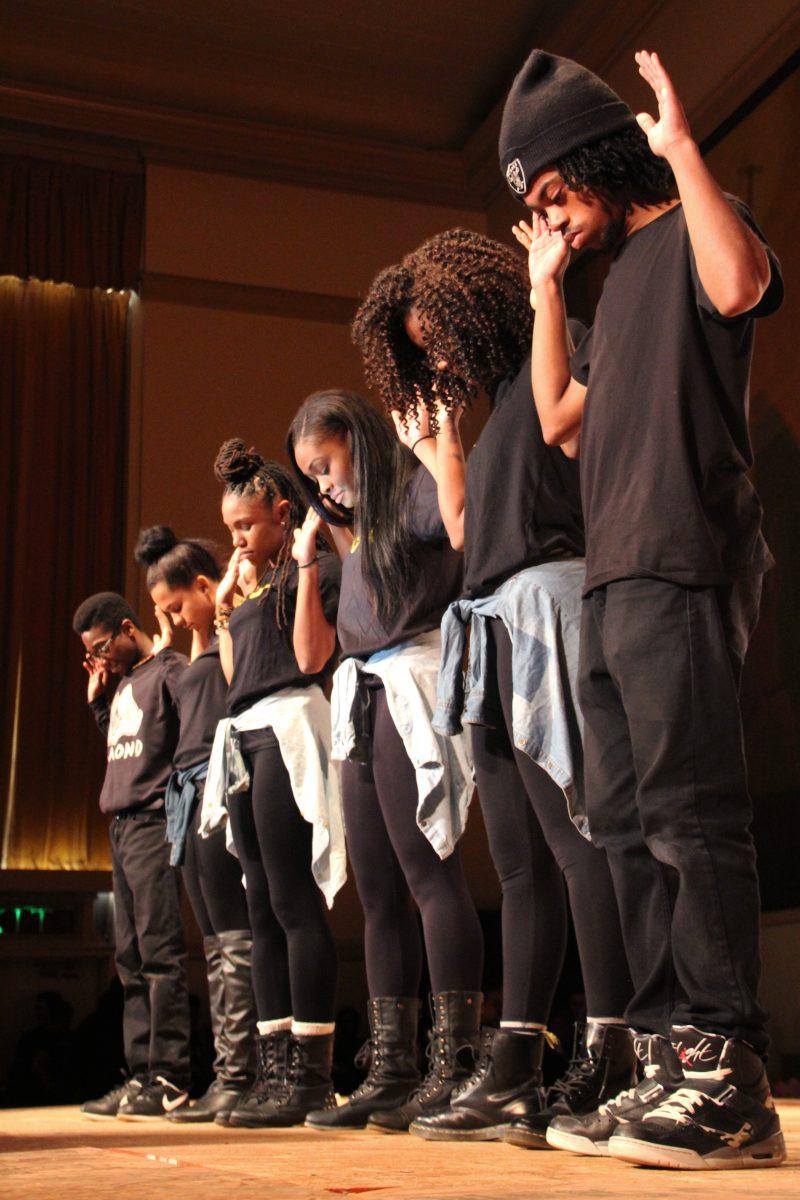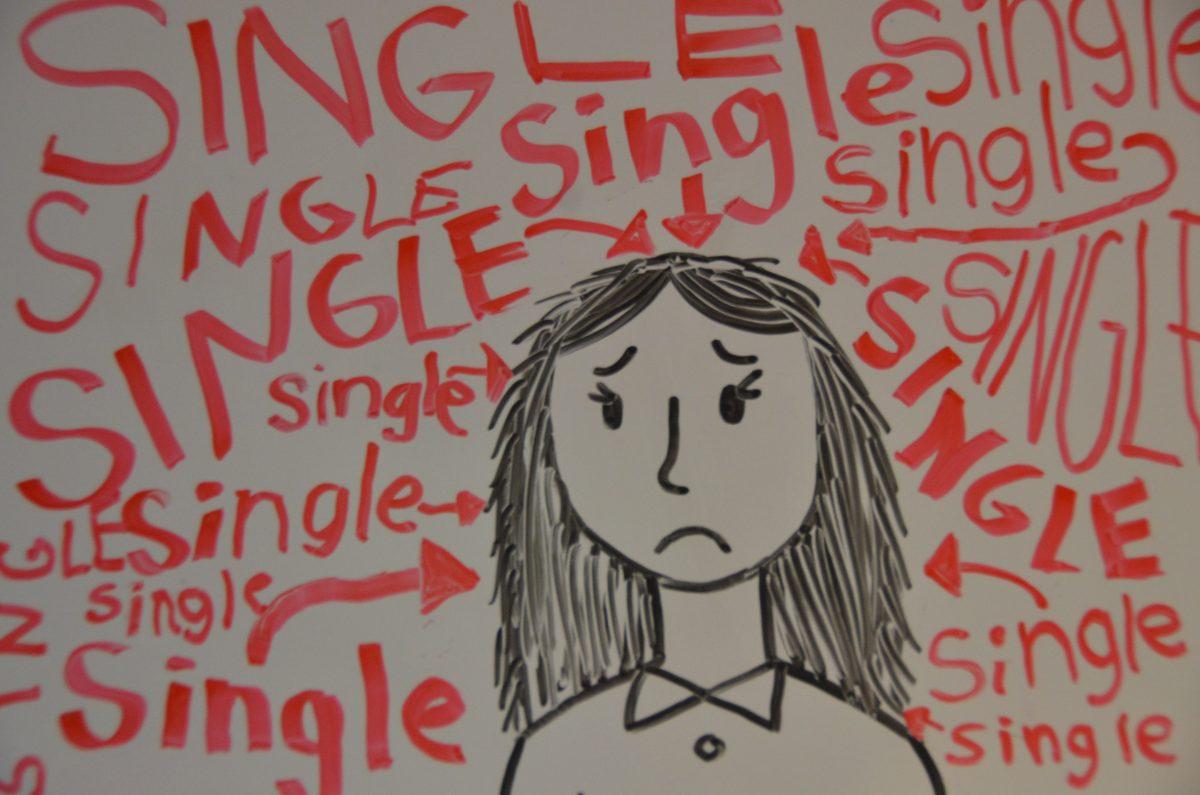A Grant High School senior smoked his first cigarette in seventh grade. A friend offered him one and he accepted.
“I didn’t like it,” he says now, adding that he didn’t think he’d get addicted. “It was gross. It was just experimental.”
He says he had no desire to try it again. But by his junior year at Grant, he was indulging in cigarettes socially with many other students and his usage increased gradually. Today, the senior says he consumes upwards of three packs a week. Now, at 18 years old, it’s perfectly legal for him to smoke.
“I’m definitely addicted,” he says, not wanting his name used for fear of being associated with the habit. “Cigarettes are actually really addictive. You smoke one the first couple times and you’re like, ‘No, this is not addictive.’ But then you keep doing it and it just becomes a habit.”
He’s not alone. Most Grant students admit smoking is a common practice among peers. A 2012 survey conducted by the Multnomah County Health Department revealed that one in four youths have experimented with cigarettes. That’s nearly twice the national youth smoking average of 14 percent. In Multnomah County, one in every 15 youths smoke cigarettes on a daily basis.
The dangers of tobacco use are no secret. For decades, doctors have warned that smoking causes cancer and a bevy of other health issues. But that hasn’t stopped the tobacco industry from marketing cigarettes to kids. In 2011, an average of $23 million was spent every day on the marketing and advertising of tobacco products.
According to the World Health Organization, much of this spending was geared toward youth. With a combined yearly marketing budget in the multi-billions, the success of tobacco companies depends on their ability to forge life-long addictions in customers. Their approach proves effective, as nearly 90 percent of adult smokers began smoking before age 18, according to statistics.
“The tobacco industry is a well-oiled machine when it comes to selling their products,” says Adelle Adams, the communications and policy lead for the Community Wellness & Prevention program at the county’s Health Department.
“It is no accident that sweet tobacco packaging and candy packaging look alike,” Adams says. “They need youths to maintain their market share.”
She wonders aloud with some annoyance which age demographic is most likely to purchase tobacco products that come in flavors like chocolate, root beer or cherry. When you add social pressures to the widespread marketing, the chance of addiction for a teen only increases.
Marking a Target
About three out of every four teen smokers become adult smokers, even if they intend to quit in a few years.
– U.S. Centers for Disease Control
Of adolescents who have smoked at least 100 cigarettes in their lifetime, most of them report that they would like to quit but are not able to do so.
Exposure to pro-tobacco marketing and media more than doubles the chances of children and adolescents starting tobacco use.
For much of the 20th century, the health risks of tobacco use were not widely known, and as a result, cigarettes were a staple across the globe. During World War II, they were even rationed to American soldiers. For a time, tobacco was almost inescapable.
At the time, ads in magazines and on television pushed cigarettes to a wide range of audiences. Whether it was the rugged cowboy known as the “Marlboro Man” taking a drag on a cigarette after a hard day on the ranch, or a suave, handsome smoker out on a date, the tobacco companies paid big money to lure people into smoking. It was portrayed as cool.
But in the early 1970s, federal legislation banned TV advertising of cigarettes and American society began looking more closely at the dangers that came from smoking. Still, the habit persisted.
When Craig Wright began his teaching career at Grant in 1977, designated smoking lounges were scattered throughout the halls for teachers. Faculty members could be seen walking around the neighborhood smoking during free time in their schedules.
Wright, who has since retired, remembers the smoking habits of one of his colleagues in the biology department. “He’d go in the back of the class and smoke in between classes,” Wright says. “The joke was that we didn’t know what color the room was because there was so much smoke back there.”
Around the same time, Joe Camel – the cartoon mascot for Camel Cigarettes – was a recurring figure across a variety of print media sources, such as billboards and magazines. “Between 1989 and 1993, when advertising for the new Joe Camel campaign jumped from $27 million to $43 million, Camel’s share among youth increased by more than 50 percent,” says the Campaign for Tobacco-Free Kids. The adult market stayed the same.
While nationally smoking has decreased from 42 percent of Americans in 1965 to 18 percent in 2012, tobacco remains a lightning-rod issue because of the push to get youth to smoke.
Senior Tallulah Blanco is opposed to smoking and says it takes control of some kids at Grant.
“People our age who aren’t even smokers will smoke when they’re at a party, hanging out with friends or when there are other people smoking,” says Blanco.
“I see kids smoking more in social situations,” she says. “First, they’re drunk and they only smoke then. But then they buy it just for themselves. It’s a vicious path to go down.”
Vice Principal Claudia Ramos-Tetz says the Grant administration takes the regulation of student tobacco use seriously. “It’s a safety thing,” she says. “There’s nothing beneficial about smoking tobacco.”
Still, a number of Grant students casually identify themselves as social smokers, a term used to describe people who don’t smoke daily but generally smoke when other people are around. This culture leaves health experts upset. “Even smoking just one cigarette is something we’re significantly concerned about,” says Adams.
One anonymous senior athlete at Grant would agree, but he continues to smoke cigarettes on a regular basis, socially and otherwise. “I know that smoking cigarettes is bad but I still do it,” he says, also admitting that his habits have harmed his athletic performance.
“I can definitely notice a clear difference of how much heavier my lungs are and how much harder it is to run,” he says. “It’s definitely noticeable that they have an impact on your body.”
Another Grant student experiences similar effects: “You smoke and you feel it in your lungs, you feel it every time you breathe. You just feel kinda heavy. It’s just a gross feeling.”
Adams, who dedicates much of her time to tobacco prevention, emphasizes that while the human body is still in development, smoking is much more harmful. Youths are more susceptible to nicotine addiction, as well as to chronic illnesses such as lung disease, heart disease and cancer.
Adams says about three out of four high school smokers will smoke into adulthood, even if they plan on quitting after a few years.
“If you ask any adult smoker, none of them thought they were gonna become addicted,” Adams says. “Addiction, especially with nicotine, is gradual.”
One Grant senior who asked to remain anonymous was shocked that he got hooked. “You really are dependent for some reason,” he says. “I still want one,” he admits, though he dropped the habit more than a year ago.
Health professionals are concerned by the dangerous tobacco culture entertained by local kids. Oregon leads the nation in the illegal sales of tobacco to children, according to a 2014 Multnomah County report.
A recent federal study from the Substance Abuse and Mental Health Services Administration’s Synar program found that 31 percent of Multnomah County retailers sold tobacco to minors. Buying cigarettes is easy, some say.
“I walk into a store and buy them,” says a 16-year-old Grant junior, who asked to remain anonymous. “They don’t card me.”
He says purchasing cigarettes has become routine. He can’t go long without them. He’s addicted.
“If I’m in school or after school and I don’t have a cigarette for two or three hours, I’ll feel really anxious and I’ll get a headache,” he says, disclosing that he has smoked a half a pack of cigarettes each day for the last seven months.
He says he’s hooked on the physical act of smoking, the social aspect and the nicotine.
Though initially drawn to cigarettes by a friend late in 2013, his experience with tobacco reaches back to his youth.
“My dad smoked for as long as I can remember,” he says. “He used to smoke in the car with the windows up while we were driving around when I was like 6, 7, 8. I suppose that kind of started it.”
He grew accustomed to inhaling second-hand smoke and became uneasy whenever his dad didn’t smoke around him. “I remember when my dad wouldn’t smoke in the car, I’d be like, ‘What? I don’t feel nice right now.’ I would get headaches and stuff,” he says.
As he removes a package of Marlboro Lights from his waistband, he speaks of his belief that cigarettes carry social power. He withdraws a cigarette and rests it between two fingers: “If you were to take a picture of me, I’ll look instantly cooler.”
“Johnny Depp, Winona Ryder, James Dean, Kurt Cobain,” he says, rattling off a list of actors who contribute to what he considers the smoky, mysterious appeal of cigarettes. He doesn’t see an end in sight.
“It’s so ingrained into our culture now,” he says. “Tobacco companies like Phillip Morris, they make billions and billions of dollars, and it’s just a business that perpetuates itself off of people’s addictions and I don’t think it’s gonna stop.”
For kids, part of the issue comes from how cigarettes are being targeted toward young people. On a recent day in January, two reporters from Grant Magazine attempted to purchase tobacco products at a handful of retailers located just blocks from the high school.
At one store, a clerk asked for identification fairly quickly. At another retailer, the person behind the counter questioned the age of those trying to buy tobacco but only after they asked about the products that looked like candy. None of the workers were surprised to see high school students making tobacco purchases during school hours.
“There’s still a lot of it going on at Grant,” says junior Haven Riffel. “A lot of kids are smoking cigarettes during school hours, which is pretty surprising.”
Riffel, a varsity track and cross country runner, feels many students carelessly neglect the health risks they may face. He’s noticed students smoking in the park just north of Grant.
While tobacco advertising may not be as conspicuous as it once was, it’s clear tobacco companies are still successfully drawing in youth.
In response to advertising regulations, tobacco companies have had to get creative. Point-of-sale marketing tactics have become the most substantial tobacco advertising expenditure, according to the American Lung Association. A 2001 study of California stores found that nearly 50 percent of the tobacco retailers had tobacco ads at young kids’ eye level, and 23 percent had cigarette product displays within six inches of candy.
Other non-traditional tactics include paying for prime in-store poster locations, pricing promotions to buy one, get one free and pricing discounts. Statistically, youths are highly sensitive to tobacco prices: every 10 percent increase in the price of cigarettes reduces youth consumption by seven percent.
Tobacco companies also market through product diversification. In recent years, dissolvable, smokeless tobacco has become popular. Camel Fresh Orbs, for instance, are designed nearly identically to Tic-Tac breath mints. Along with the popular Swisher Sweet, a colorfully-packaged, fruit-flavored cigarillo, these products are of utmost concern to experts.
People often assume that flavored tobacco is less harmful, but in reality, the products are literally sugar-coated nicotine.
Not long ago, Multnomah County launched Sweet Deceit, a campaign against flavored tobacco products. With electronic cigarettes still legal for purchase by minors in Oregon, Multnomah County is doing everything it can to deter kids from nicotine.
“Candy or Tobacco? Don’t be fooled,” reads one Sweet Deceit poster.
The addicted Grant senior doesn’t feel personally influenced by the sugary marketing approach, but the strategy disturbs him. “It’s pretty messed up. The cigarettes are right there next to the candy,” he says.
However, many believe that social pressure is the greatest force in the creation of new smokers. Sophomore Cosmos Dart thinks students naturally associate tobacco with maturity.
“It makes you seem more grown up and mature, even though it kind of portrays the opposite,” says Dart. “If you put a guy at a party alone in a corner with nothing in his hands, he looks like a loner. But if you put him with a cigarette in his hands, he looks like a philosopher.”
Dart admits to using tobacco products about once a month, but says he isn’t addicted: “A few times, I’ve felt like the urge to go and try to get that head rush again. But then I tell myself that’s the way to get hooked so I just like push it out of my head,” he says.
On the other hand, Grant senior Aaron Karson believes social tolerance for smoking has decreased. Karson, who identifies as a “habitual smoker” and hopes to quit eventually, is not always comfortable with his habit.
“I know that whenever I smoke in public, I feel a lot more embarrassed than cool,” Karson says. “I’m actually pretty anxious when I smoke in public because I feel very aware that I’m (affecting) everyone around me, and maybe not everyone’s cool with it and definitely nobody asked for it.”
“I mean, I smoke and I still get annoyed when I’m outside a coffee shop and somebody lights up right next to me, not to mention the amount of unsightly litter made by inconsiderate smokers flicking their butts anywhere but a trash can,” he says.
While some teens use tobacco to stand out, others use it to satisfy their addiction. Grant health teacher Randy Heath started chewing tobacco at around age 15. Chewing tobacco was common in Medford where he grew up, and even more common among the people he spent time with. As a baseball player and sawmill worker, Heath had constant exposure. Years passed before he finally quit. He strongly discourages students from experimenting with nicotine. He warns that there’s no way of predicting who will get addicted and who will not.
Too Young?
Nearly 23 percent of high school students reported using a tobacco product in the previous 30 days in 2013.
– U.S. Centers for Disease Control
More than 380,000 12- to 13-year-olds and almost four million 14- to 17-year-olds in the U.S. have smoked.
– U.S. Department of Health and Human Services – Office of Adolescent Health
Every day, almost 3,900 children under 18 years of age try their first cigarette. Statistics show more than 950 of them will become daily smokers. Half of them will ultimately die from their habit.
“It starts out as a social thing that becomes more and more frequent, and then, because we know nicotine is so addictive, it becomes a regular habit and an addiction,” says Heath, who majored in health and physical education at Linfield College.
For the addicted senior, getting hooked is a slippery slope. “It’s not like I feel like dependent on it, but it’s just like I’d rather smoke than not smoke. It’s just relaxing. It takes the edge off,” he says.
However, the sense of tranquility he and others receive from tobacco is a direct result of addiction. Scientifically, the relieving experience provided by smoking is a chemical response to the removal of nicotine withdrawal symptoms. Nicotine withdrawal, whether minor or severe, creates a precarious cycle of dependency.
“Nicotine’s a stimulant initially,” says Heath. “It relaxes people who are addicted.”
Although many see a tobacco trend, plenty have decided against it.
For senior Will Gordon, nicotine addiction runs in the family. His grandfather passed away in 2012 after a battle with lung cancer that lasted about seven years. His aunt is currently in remission from lung cancer. Both relatives continued to smoke despite knowing their diagnosis. Heavily influenced by the experiences of his relatives, Gordon stays away from tobacco products.
“There’s no point,” Gordon says of smoking. “It’s literally paying money to kill yourself.”
Grant junior Kamryn Hogan, a varsity cross country runner, also chooses not to smoke. “It seems stupid to put anything bad in my body when I’m working so hard,” she says.
Senior Annie Willis has no interest in the negative influence cigarettes would have on her extracurricular activities. Willis is very active in the performing arts community. She has acted professionally since her freshman year and has plans to pursue it after high school.
“I would like to be able to continue to project my voice and sing,” she says.
But there’s more to Willis’ aversion to smoking — with two parents who used to smoke, and an open dialogue with her mother, Karen Riley-Cummings —Willis has no interest.
Riley-Cummings was always candid with her daughters about tobacco. Despite the fact that Riley-Cummings’ mother smoked throughout her entire pregnancy and both parents smoked throughout her youth, her parents didn’t talk with her when it came to tobacco.
“My father smoked and he hid it. He would go outside and pretend he wasn’t,” she says. “The difference is that my parents didn’t talk to me about it, so I talk to my kids a lot about it.”
Her approach clearly worked, as neither of her daughters use tobacco products. Willis says she will never smoke cigarettes.
“I’d rather not die,” she says. ◊




